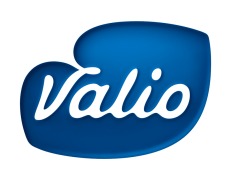News
Dairy goes premium to compete with plants
22 Jul 2019The dairy industry has been under pressure from plant-based milk alternatives – and its response has been to rethink products that have changed little in the past couple of decades. Will it be enough to rejuvenate consumer interest in dairy?
The rate of change in plant-based milk alternatives has been lightning fast, as products based on ingredients like coconut, rice, almond, oat and cashew have proliferated. According to Innova Market Insights, global sales of dairy alternative drinks accounted for more than 8% of global dairy launches in 2017, and the number more than doubled over a five-year period.

What is more, the non-dairy aisle has become an exciting space, with a wide variety of products to try. After decades of dominating the category, soy was knocked off its top spot in 2016, as rice was used in more new products for the first time. Globally, plant-based milk alternatives made from soy accounted for 39% of new products in 2013, but fell to 21% in 2017, when more new products were derived from rice (23%) and almonds (22%), according to Mintel.
Oat- and coconut-based milk alternatives were also on the rise, each accounting for 14% of new products. And in some regions, including Europe and the United States, milks made from almonds now account for about two-thirds of the alternatives market.
Plant-based dairy alternatives are still dwarfed by dairy, but traditional dairy milk producers have taken note of the rise and rise of the plant-based alternatives market. In response, they have turned their attention to the attributes that differentiate their products in an effort to lure consumers back to the dairy aisle.
According to Euromonitor International, younger consumers in particular often are turning to dairy alternatives for animal welfare and environmental reasons, and many dairy companies are highlighting their sustainability credentials, including Globemilk in The Netherlands and Valio in Finland. Globemilk also has introduced a line of specialist milks to tap into other consumer trends, such as sustainable barista milk for coffee-making, and green tea matcha milk.
Other specialist milk products on the rise include those with organic and grass-fed claims. Mintel figures show 19.2% of dairy launches in Western Europe carried an organic claim in 2018, up from 12.6% five years earlier, and ‘grass-fed’ products doubled, albeit from a low base.
Nutritional value is an obvious target too, and beyond comparing regular cow’s milk with plant alternatives, companies are investing in improving the nutritional profile of dairy milk. Some have taken note of rising interest in protein in general, and are highlighting milk’s high protein content on product packaging, while others have taken this a step further. Ultra-filtered milk, which has a significantly higher protein content than regular milk, has seen a steep rise in popularity, according to Euromonitor.
Lactose-free is another growing segment of the dairy milk category, with launches accounting for 16.6% of all Western European dairy launches in 2018, compared to 11.3% five years earlier, according to Mintel. Companies have aimed to broaden the appeal beyond lactose intolerant consumers by positioning it as ‘easy to digest’. In addition, A2 milk – said to be easier to digest as it only contains A2 beta casein protein – has also done well in markets like Australia and New Zealand.
All this suggests that despite the rise of plant products, the dairy milk category could hold its own, especially as it targets macrotrends beyond the move toward plant-based eating, such as interest in sustainability, protein, digestion and animal welfare.
